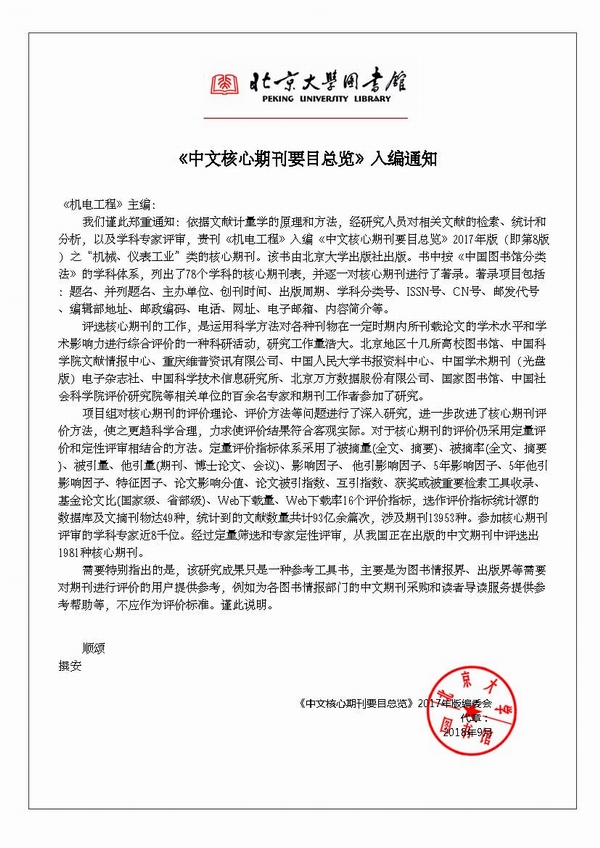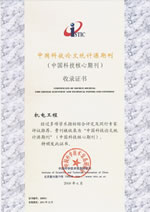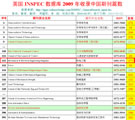
Founded in 1971 >
Chinese Sci-tech Core Periodicals >
British Science Abstracts (SA, INSPEC) Indexed Journals >
United States, Cambridge Scientific Abstract: Technology (CSA: T) Indexed Journals >
United States, Ulrich's Periodicals Directory(UPD)Indexed Journals >
United States, Cambridge Scientific Abstract: Natural Science (CSA: NS) Indexed Journals >
Poland ,Index of Copernicus(IC) Indexed Journals >
International Standard Serial Number:
ISSN 1001-4551
Sponsor:
Zhejiang University;
Zhejiang Machinery and Electrical Group
Edited by:
Editorial of Journal of Mechanical & Electrical Engineering
Chief Editor:
ZHAO Qun
Vice Chief Editor:
TANG ren-zhong,
LUO Xiang-yang
Tel:
86-571-87041360,87239525
Fax:
86-571-87239571
Add:
No.9 Gaoguannong,Daxue Road,Hangzhou,China
P.C:
310009
E-mail:
meem_contribute@163.com
Abstract: Aiming at the problem of the limitations and deficiencies in the current research on the prediction of elevator wire rope wear, based on the machine learning method of the extreme gradient boosting (XGBoost) algorithm, theoretical analysis, data collection and experimental testing were carried out on the prediction of wire rope wear rate. First, an additional regularization term was added to the objective loss function and Bayesian hyperparameter optimization was used, and the optimized algorithm BO-XGBoost (Bayesian optimization-eXtreme gradient boosting) was proposed;
then a self-made elevator wire rope fatigue testing machine was used to determine the diameter, load force, frequency and wrap angle of the researched traction sheave, and the data used to predict the wear rate of wire rope were obtained; finally, the BO-XGBoost algorithm was used to predict and analyze the wear rate of wire rope, and at the same time, it was compared with the other machine learning algorithms, such as multiple linear regression (mixed logistic regression,MLR), random forest (RF), and support vector machine (SVM). The research results show that the BO-XGBoost algorithm has the best modeling effect and regression effect, and its generalization ability is also the highest. It can adapt to experiments under different working conditions and is better than other models in predicting wire rope wear rate. The predicted value and the experimental value have reached an accuracy of 99.1%, which proves the effectiveness of the method.
Key words: elevator; wire rope; wear prediction; extreme gradient lifting;regression model








